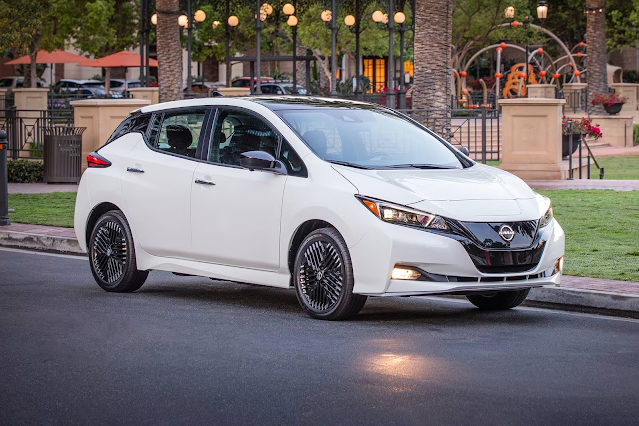In the realm of electric vehicles (EVs), the Nissan Leaf holds a special place as one of the pioneers that ushered in a new era of sustainable and efficient transportation. Since its debut in 2010, the Nissan Leaf has been at the forefront of electric mobility, providing drivers with an eco-friendly alternative to traditional gasoline-powered cars. In this comprehensive overview, we will delve into the history, features, and impact of the Nissan Leaf, showcasing its journey from a groundbreaking concept to a mainstream electric vehicle.
A Glimpse into the Past: The Birth of the Leaf
The Nissan Leaf was conceived during a time when electric cars were largely seen as a novelty. The automotive industry was dominated by internal combustion engine vehicles, and skepticism surrounded the feasibility of electric mobility. However, Nissan, with its commitment to innovation and sustainability, decided to take a bold step forward.
The first-generation Nissan Leaf was officially unveiled in 2010, marking a significant milestone in the automotive world. It was the world's first mass-produced, affordable, and practical all-electric car. With a range of approximately 73 miles on a single charge, it addressed the needs of many urban and suburban commuters. The Leaf's design was distinctive but not overly futuristic, appealing to a wide range of consumers.
Evolving Technology: The Second and Third Generations
Nissan continued to refine the Leaf, releasing the second-generation model in 2018. This version offered an extended range, improved performance, and a more appealing design. The Leaf's range increased to around 150 miles, thanks to a larger battery pack, making it an even more practical choice for daily driving. Additionally, features like ProPILOT Assist, which provided advanced driver-assistance capabilities, further enhanced its appeal.
In 2020, Nissan introduced the third-generation Leaf with the Leaf e+, boasting a range of up to 226 miles. This new variant answered the call for longer-range electric vehicles, positioning the Leaf as a viable option for more extensive travel. Furthermore, the Leaf continued to integrate advanced technology, such as Nissan's e-Pedal, which allowed for one-pedal driving, simplifying city commuting and enhancing regenerative braking.
Charging Infrastructure and Convenience
Nissan recognized that for electric vehicles to succeed, an extensive charging infrastructure was essential. As a result, they actively participated in creating a network of fast-charging stations, making it easier for Leaf owners to find convenient charging options. This commitment to expanding charging infrastructure helped ease one of the primary concerns of potential EV buyers: range anxiety.
Additionally, Nissan introduced a host of smart features through their NissanConnect EV app, allowing Leaf owners to remotely check battery status, schedule charging times during off-peak hours, and even pre-condition the cabin for a comfortable climate before starting a journey.
Environmental Impact and Sustainability
One of the central motivations behind the development of the Nissan Leaf was to reduce the environmental impact of personal transportation. By eliminating tailpipe emissions and reducing the reliance on fossil fuels, the Leaf significantly contributes to a greener future. The manufacturing process also embraced sustainability, using recycled materials and reducing waste.
Furthermore, the Nissan Leaf played a pivotal role in raising awareness about electric mobility and stimulating other automakers to enter the EV market. As more manufacturers followed suit, competition spurred innovation and led to the development of more efficient and affordable electric vehicles.
The Global Impact of the Nissan Leaf
Over the years, the Nissan Leaf has made a global impact on the automotive landscape. It has been embraced by environmentally conscious consumers and has played a part in reducing greenhouse gas emissions worldwide. Nissan's decision to prioritize electric mobility with the Leaf has not only positioned them as a leader in the EV market but has also influenced the strategies of other automakers.
The Nissan Leaf has also been a popular choice for fleets and businesses looking to reduce their carbon footprint. Its reliability, low operating costs, and favorable total cost of ownership have made it an attractive option for corporate and government fleets around the world.
Head to: HiPhi Z, A Glimpse into the Future of Electric Vehicles
The Future of the Nissan Leaf
As we move into the future, the Nissan Leaf continues to evolve. The electric vehicle market is rapidly expanding, with more models and brands entering the scene. To remain competitive, Nissan has been working on further improvements to the Leaf, including extended range options, faster charging capabilities, and enhanced connectivity features.
Additionally, the Leaf is part of Nissan's broader vision for a sustainable future. The company is investing in research and development to push the boundaries of electric vehicle technology, exploring areas such as solid-state batteries and vehicle-to-grid (V2G) integration. These innovations aim to make electric vehicles even more accessible and efficient, further reducing our reliance on fossil fuels.

Comments
Post a Comment